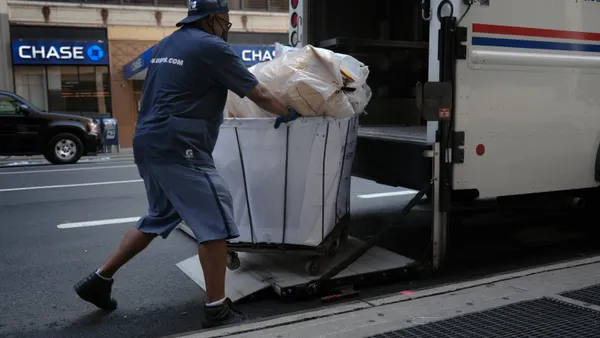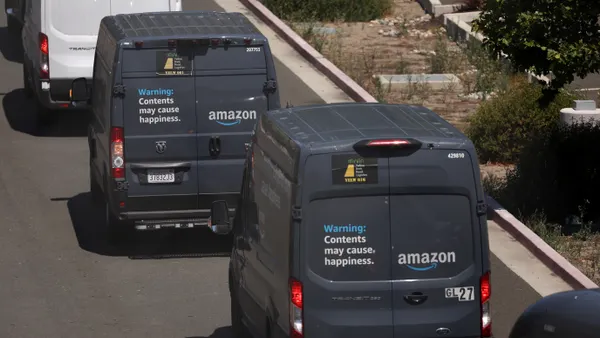Dive Brief:
- The U.S. Supreme Court rejected an appeal Monday, without comment, from UPS to raise the minimum price threshold for United States Postal Service (USPS) package delivery. "UPS is disappointed that the Supreme Court decided not to hear this case," UPS spokesperson Kara Ross told Supply Chain Dive in an email. "We will continue to work with the Postal Regulatory Commission to advocate for transparent cost accounting at the USPS."
- USPS’ contracts, service agreements and delivery prices are subject to regulation by the federal government. UPS believes USPS’ delivery prices are artificially low, thereby making it difficult for UPS to compete as e-commerce costs and package volumes rise.
- The Trump administration established a task force in December 2018 to develop recommendations on whether to implement price increases to offset USPS' recent financial losses. The task force has yet to release any price increase information; however, USPS did increase delivery prices by a few cents in January 2019.
Dive Insight:
Because USPS rates are controlled by the federal government, the Postal Regulatory Commission specifically, it is a popular last-mile delivery choice for Amazon and other online retailers for its comparatively low prices and its universal federal delivery mandate, which requires USPS to deliver everywhere in the U.S.
This is a valuable distribution option for companies doing business with online customers who are spread across the country and drawn to affordable shipping options.
In the run-up to this month's Supreme Court case, Amazon and the National Retail Federation (NRF) announced a "Package Coalition" to support USPS. The group includes major companies like Columbia Sportswear, Publishers Clearing House and QVC. The coalition's aim is "to work proactively with policymakers and the public to highlight the importance of the postal package delivery services to American businesses and consumers," the group said in a press release.
Package volumes for USPS have increased in recent years, in large part thanks to Amazon and the growth of e-commerce, and the category has offset some losses in first-class mail. Still, the U.S. Treasury Department reported USPS delivery rates have not generated enough revenue to keep the organization from running at a loss.
"We are legally limited under current law in how we can price our products and streamline our legacy costs," said USPS Chief Financial Officer and Executive Vice President Joseph Corbett in the agency's second quarter fiscal 2019 earnings report. "Within the framework of our current business model, we are executing to grow revenue and reduce operating expenses."
The Postal Service’s second quarter results showed a total revenue of $17.5 billion for the quarter, a decrease of $8 million from this time last year. The net loss for the quarter was nearly $2.1 billion, an increase of $747 million from 2018. According to a 2018 Treasury Department report, USPS has experienced net losses of $69 billion between fiscal years 2007 and 2018.














